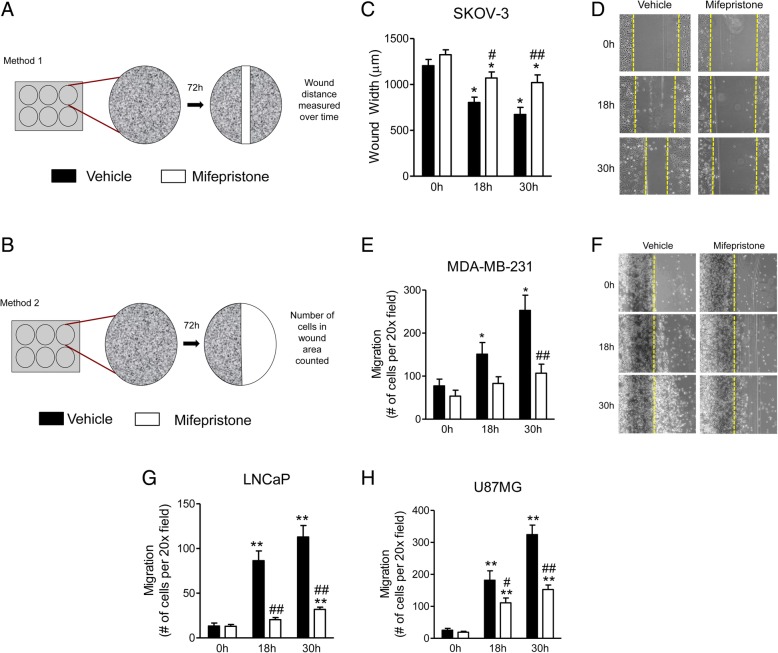Fig. 1.
Mifepristone impairs the migration of cancer cells as shown in scratch assays. The schematics of the two methods used to study migration via a wound healing approach are shown in panels (a) and (b). In (c) and (d) SKOV-3 cells were treated with vehicle or 23.5 μM MF for 72 h prior to wounding. Multiple images were taken of each well at various time-points. The width of the wound was measured three times per image. Data shown represent the mean ± s.e.m. of three independent experiments completed in triplicate. Vehicle (closed bars), MF (open bars). *P < 0.01 vs. 0 h; #P < 0.05 vs. vehicle; ## P < 0.01 vs. vehicle. Statistical analysis of individual treatment groups over time (vs. time = 0 h) was done using a one-way ANOVA followed by Tuckey’s multiple-comparison test. Analysis between treatment groups over time (vs. vehicle) was performed using a two-way ANOVA followed by Bonferroni’s multiple- comparison test. Panels (e) and (f) show the migration of MDA-MB-231 cells upon treatment with 30 μM MF for 72 h prior to wounding. Notice that the dark line detected by the microscope to the left of the border of the wounded area, denoted in yellow, represents the original line traced with a pen underneath the plate before the wound was created. This artifact does not preclude us for counting the cells that migrated away of the wound. Similar migratory experiments in response to 20 μM MF for 72 h were done using LNCaP (g) and U87MG (h) cells. The statistical analysis done in e, g, and h is similar to that described for c

